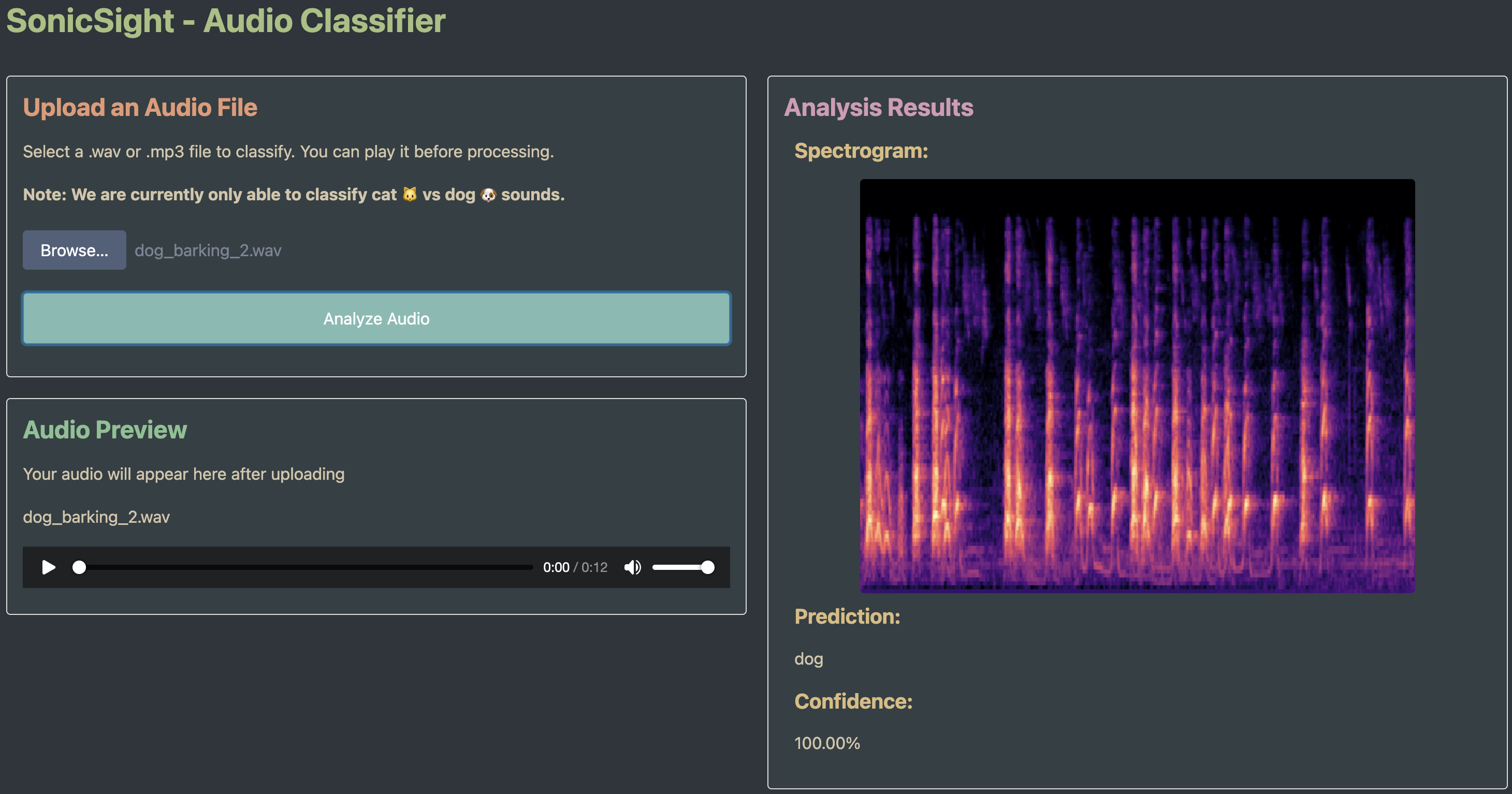Takes simple audio files, generates a spectrogram and uses an image classification model to identify the sound. Created this web application to display the model I trained, applying lessons 1 & 2 of the fast.ai course. Currently, the model is trained to only recognized spectrograms of dog & cat sounds.
flowchart TB
subgraph "Frontend Network"
subgraph "Raspberry Pi"
subgraph "Piku PaaS"
FastHTML["FastHTML Frontend"]
NGINX["NGINX Server"]
end
end
end
subgraph "Cloudflare"
CloudflareTunnel["Cloudflare Tunnel"]
end
subgraph "Internet"
User["Internet User"]
end
subgraph "Hugging Face"
GradioAPI["Gradio API"]
subgraph "Inference"
AIModel["Trained Model"]
end
end
subgraph "Kaggle"
KaggleServers["Training Servers"]
end
%% Connections for normal operation
User -->|"Access Website"| CloudflareTunnel
CloudflareTunnel -->|"Secure Tunnel"| NGINX
%% Connection removed as Piku is inside Raspberry Pi
NGINX -->|"Serve"| FastHTML
FastHTML -->|"API Calls"| GradioAPI
GradioAPI -->|"Inference"| AIModel
%% Training relationship
KaggleServers -->|"Trained & Exported"| AIModel
%% Styling
classDef homeNet fill:#f9f9f9,stroke:#333,stroke-width:1px;
classDef cloud fill:#f0f8ff,stroke:#333,stroke-width:1px;
classDef platformService fill:#e6ffe6,stroke:#333,stroke-width:1px;
class User,Internet cloud;
class RaspPi,Piku,FastHTML,NGINX homeNet;
class CloudflareTunnel,GradioAPI,AIModel,KaggleServers platformService;
- FastHTML: Python frontend application/framework
- Raspberry Pi: Acts as home server hosting the application
- Piku: A lightweight Platform-as-a-Service (PaaS) running on Raspberry Pi
- NGINX: Web server that handles HTTP requests and serves content
- Cloudflare Tunnels: Securely exposes server to the internet without opening firewall ports
- Hugging Face Space: Hosts ML model and backend server for inference
- Gradio Client API: Provides the interface between frontend and the model
- Kaggle: Where I initially trained the model before deployment
-
Loaded cat and dog audio files from ESC-50 and this kaggle notebook
-
Generated spectrograms using librosa and saved them to their respective directories for labelling
-
Defined a DataBlock which is essentially a pipeline builder that lets you easily define:
- What kind of data you have (images, text, tabular, etc.)
- How to get your data (e.g., from folders, DataFrames, or lists)
- How to split the data (e.g., train/validation sets)
- How to apply transformations (e.g., data augmentation for images)
- How to batch and load the data efficiently (using PyTorch DataLoader)
-
Fed data to a pretrained model, resnet50, a CNN designed for image classification and other computer vision tasks
-
Trained this model further to recognize spectrograms belonging to cats and dogs and apply transfer learning
-
Plotted the loss vs learning rate to reduce amount of guesswork on picking a good starting learning rate
-
Fine tuned the mode, which is fast.ai's way to simplify transfer learning. It automates steps such as learning rate scheduling, progressive unfreezing, and discriminative learning rates
-
Used an
EarlyStoppingCallbackto stop early whenvalid_lossstops improving and saving the model's best run during training and loads it at the end -
Exported the model to use for inference
